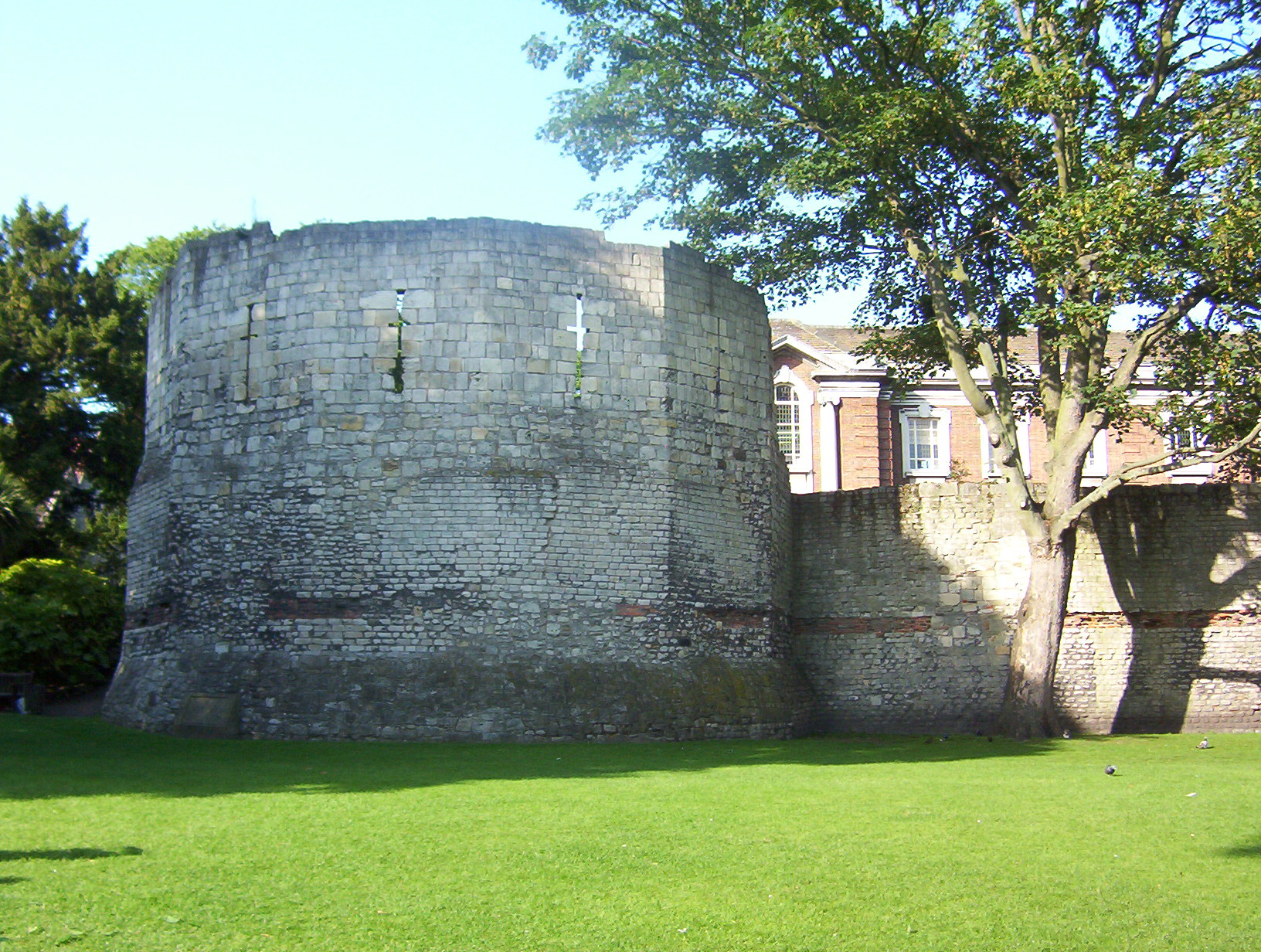|
70 And 72 Micklegate
70 and 72 Micklegate is a shop in the city centre of York, in England. The building originated around 1500, as a two-storey timber-framed house, on the north side of Micklegate, a major route into the city. In the 17th-century, a third storey was added, and around the same time, the whole building was extended to the rear. From 1802, the building was occupied by a saddler, who sublet parts of the large house, and made extensive alterations. The building was refronted in 1823, and further extensions were added to the rear. The rear extensions were partially demolished and rebuilt between 1970 and 1980. The building's facade is of dull red brick with narrow mortared joints. There are bow windows at first floor level, and at roof level there is a cornice and an early drainpipe. The ground floor shopfront is 20th-century, although an early fanlight survives above the door to number 70. Inside, 17th-century doors survive in the attic of 70, while there is a reused door from abo ... [...More Info...] [...Related Items...] OR: [Wikipedia] [Google] [Baidu] |
York
York is a cathedral city with Roman Britain, Roman origins, sited at the confluence of the rivers River Ouse, Yorkshire, Ouse and River Foss, Foss in North Yorkshire, England. It is the historic county town of Yorkshire. The city has many historic buildings and other structures, such as a York Minster, minster, York Castle, castle, and York city walls, city walls. It is the largest settlement and the administrative centre of the wider City of York district. The city was founded under the name of Eboracum in 71 AD. It then became the capital of the Roman province of Britannia Inferior, and later of the kingdoms of Deira, Northumbria, and Jórvík, Scandinavian York. In the Middle Ages, it became the Province of York, northern England ecclesiastical province's centre, and grew as a wool-trading centre. In the 19th century, it became a major railway network hub and confectionery manufacturing centre. During the Second World War, part of the Baedeker Blitz bombed the city; it ... [...More Info...] [...Related Items...] OR: [Wikipedia] [Google] [Baidu] |
Micklegate
Micklegate is a street in the City of York, England. The name means "Great Street", "gate" coming from the Old Norse ''gata'', or street. Micklegate is described by York City Council as "one of the most handsome streets in Yorkshire", and was described by Nikolaus Pevsner as "...without any doubt the most architecturally rewarding street in York". There are three Medieval churches on the street, and a total of four Grade I listed buildings, with the majority of buildings being three- or four-storey Georgian structures. The name Micklegate is sometimes applied to a slightly broader area, including the side streets Toft Green, Priory Street, Trinity Lane and St Martin's Lane. There is also a ward of Micklegate, used for elections to the City Council, which covers a much larger area, spreading well beyond the city walls. Geography The street runs east from the York city walls at Micklegate Bar, long the main southern entrance to the city, continuing the route of Blossom Stree ... [...More Info...] [...Related Items...] OR: [Wikipedia] [Google] [Baidu] |
Grade II* Listed
In the United Kingdom, a listed building or listed structure is one that has been placed on one of the four statutory lists maintained by Historic England in England, Historic Environment Scotland in Scotland, in Wales, and the Northern Ireland Environment Agency in Northern Ireland. The term has also been used in the Republic of Ireland, where buildings are protected under the Planning and Development Act 2000. The statutory term in Ireland is " protected structure". A listed building may not be demolished, extended, or altered without special permission from the local planning authority, which typically consults the relevant central government agency, particularly for significant alterations to the more notable listed buildings. In England and Wales, a national amenity society must be notified of any work to a listed building which involves any element of demolition. Exemption from secular listed building control is provided for some buildings in current use for wor ... [...More Info...] [...Related Items...] OR: [Wikipedia] [Google] [Baidu] |
Grade II* Listed Buildings In York
There are over 20,000 Grade II* listed buildings in England. This page is a list of these buildings in the district of the City of York in North Yorkshire. List of buildings See also * Grade I listed buildings in the City of York There are over 9,000 Grade I listed buildings in England. This page is a list of these buildings in the City of York in North Yorkshire. List of buildings See also * Grad ... Notes References External links {{DEFAULTSORT:City of York Lists of Grade II* listed buildings in North Yorkshire Grade II* listed buildings in the City of York ... [...More Info...] [...Related Items...] OR: [Wikipedia] [Google] [Baidu] |



